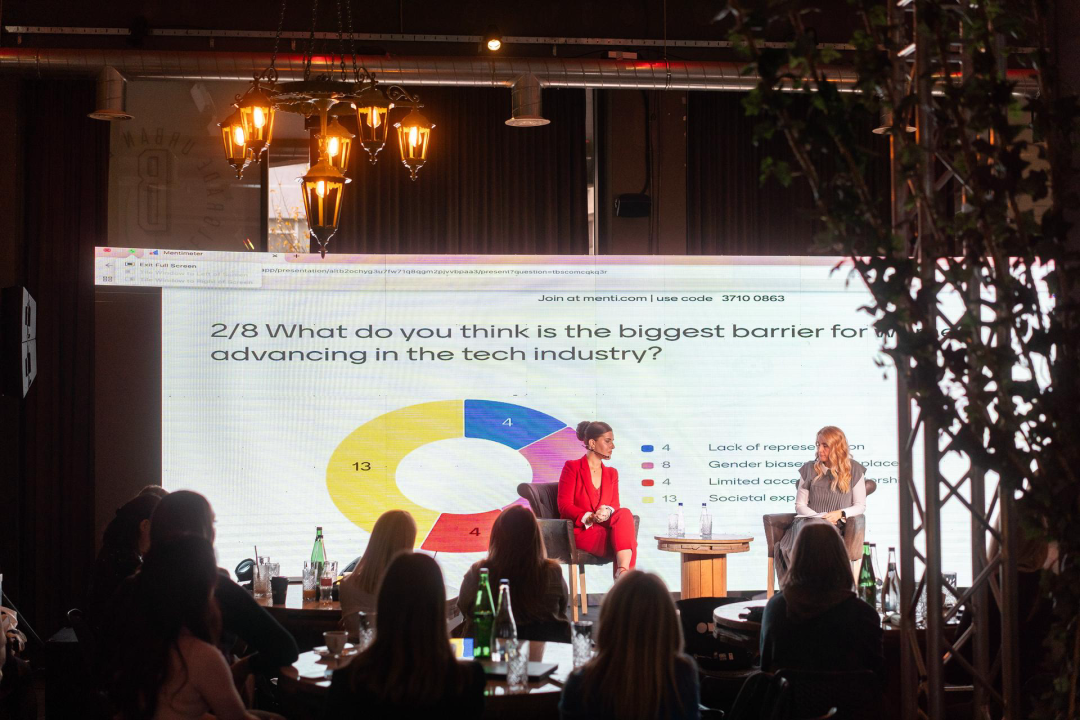Disclaimer:
Please be aware that the content herein has not been peer reviewed. It consists of personal reflections, insights, and learnings of the contributor(s). It may not be exhaustive, nor does it aim to be authoritative knowledge.
Overview
Prepared by (Name of the experimenter)
Kristina Nikolic, together with UNDP Serbia in collaboration with the Office for IT and eGovernment Republic of Serbia, supported by the British Embassy in Serbia
On date (Day/Month/Year)
22/11/2024
What action learning plan is this activity related to?
This activity explored the power of invite-only gatherings to provide a safe and inclusive environment where girls and women in STEM could openly share their experiences, network with peers, and engage directly with stakeholders and partners to inform actionable insights.
Design
What is the specific learning intent of the activity? Why is it important to do this experiment?
This experiment was designed to evaluate how creating an invite-only, safe event environment could foster open dialogue and meaningful engagement among participants and stakeholders. The event intentionally provided a secure, intimate setting that encouraged attendees to share their personal stories and experiences in STEM while also giving partners direct access to these insights to better understand systemic challenges.
Key elements of the design included:
Invite-only format: Carefully curated participant list to ensure a safe and supportive environment, including women professionals, students, and academics in STEM.
Safe space for dialogue: Designed as a judgment-free setting to allow for honest conversations about challenges, opportunities, and successes in STEM.
Networking opportunities: Facilitated interaction among attendees to encourage community building and peer support.
Partner engagement: Stakeholders were invited to listen to firsthand accounts from participants, helping them develop more informed strategies to address barriers for women in tech.
Learning Intent:
To determine whether an exclusive, supportive event format can effectively amplify the voices of women in STEM, foster meaningful connections, and provide partners with actionable insights from direct participant engagement.
Importance:
Addressing gender imbalances in STEM requires deep understanding of the lived experiences of girls and women in the field. Traditional event formats often fail to create the safe spaces needed for honest dialogue. This experiment tested whether an invite-only format could overcome these challenges and lead to more impactful outcomes.
What is your hypothesis? IF... THEN....
An invite-only event that prioritizes safety and inclusivity will encourage greater participant engagement, foster networking, and provide stakeholders with valuable insights to inform gender-responsive strategies in STEM.
Does the activity use a control group for comparison?
No, it does not use a control group
Describe which actions, with whom, where, when will you (or did you) take to test your hypothesis:
Participants included 55 individuals, primarily women in STEM, ranging from students to professionals and academics. This group was selected to ensure diverse perspectives while maintaining a safe and supportive space for dialogue. Additionally, development partners and national partners attended the event, providing them with a unique opportunity to hear firsthand accounts from participants. Their presence was essential for gaining deeper insights into systemic challenges and for informing gender-responsive policies and initiatives in STEM.
If you worked with partners, please choose what sector they belong to (select all that apply)
Civil Society, Academia, Private Sector, Government (& related), United Nations
What is the total estimated monetary resources needed for this experiment?
Between 1,000 and 9,999 USD
Please upload any supporting images or visuals for this experiment.
Please upload any supporting links
Results
Was the original hypothesis (If.. then) proven or disproven? In which way do the results support the original hypothesis or not?
Yes, the hypothesis was supported. The event's exclusive and safe format led to significant participant engagement and honest sharing of experiences, providing partners with direct access to valuable insights about the barriers faced by women in STEM.
What are the most important learning outcomes of the experiment? Are any changes recommended?
Open Sharing: Participants shared deeply personal and professional experiences about the challenges of working in STEM, including societal expectations, workplace biases, and the lack of mentorship.
Networking Achievements: The event facilitated meaningful connections among attendees, promoting peer support and knowledge exchange.
Insights for Partners: Stakeholders gained firsthand accounts of systemic challenges and actionable recommendations to address them, including better mentorship programs and policies to support diversity in STEM.
Empowered Participants: Attendees left feeling heard, inspired, and motivated to continue advocating for change in the tech industry.
Considering the outcomes of this experimental activity, which of the following best describe what happened after? (Please select all that apply)
This experiment led to partnerships, This experiment led to adoption of new ways of working by our partners
Please add any supporting links that describe the planning, implementation, results of learning of this activity? For example a tweet, a blog, or a report.
Learning
What were the main obstacles and challenges you encountered during this activity? What advise would you give colleagues trying to replicate this experimental activity?
What were the main obstacles and challenges you encountered during this activity?
Participant Hesitation: Some attendees were initially reluctant to share personal stories, requiring additional encouragement from moderators.
Time Constraints: The depth of discussions meant some planned topics could not be covered in full.
Balancing Inclusivity and Exclusivity: Ensuring a curated yet diverse participant list required careful planning and outreach.
What advice would you give colleagues trying to replicate this experimental activity?
Prioritize Inclusivity in Invitations: Carefully curate the guest list to ensure a safe and diverse space for dialogue.
Facilitate Comfort: Use moderators to create a welcoming environment and encourage open sharing.
Allocate Ample Time: Plan for longer discussions to allow participants to fully express their thoughts.
Engage Stakeholders Actively: Ensure partners are present to listen and engage directly with participant feedback.
Follow Up with Actions: Use insights gained from the event to shape concrete recommendations and initiatives.


 5Gender equality
5Gender equality 9Industry, innovation and infrastructure
9Industry, innovation and infrastructure


Comments
Log in to add a comment or reply.